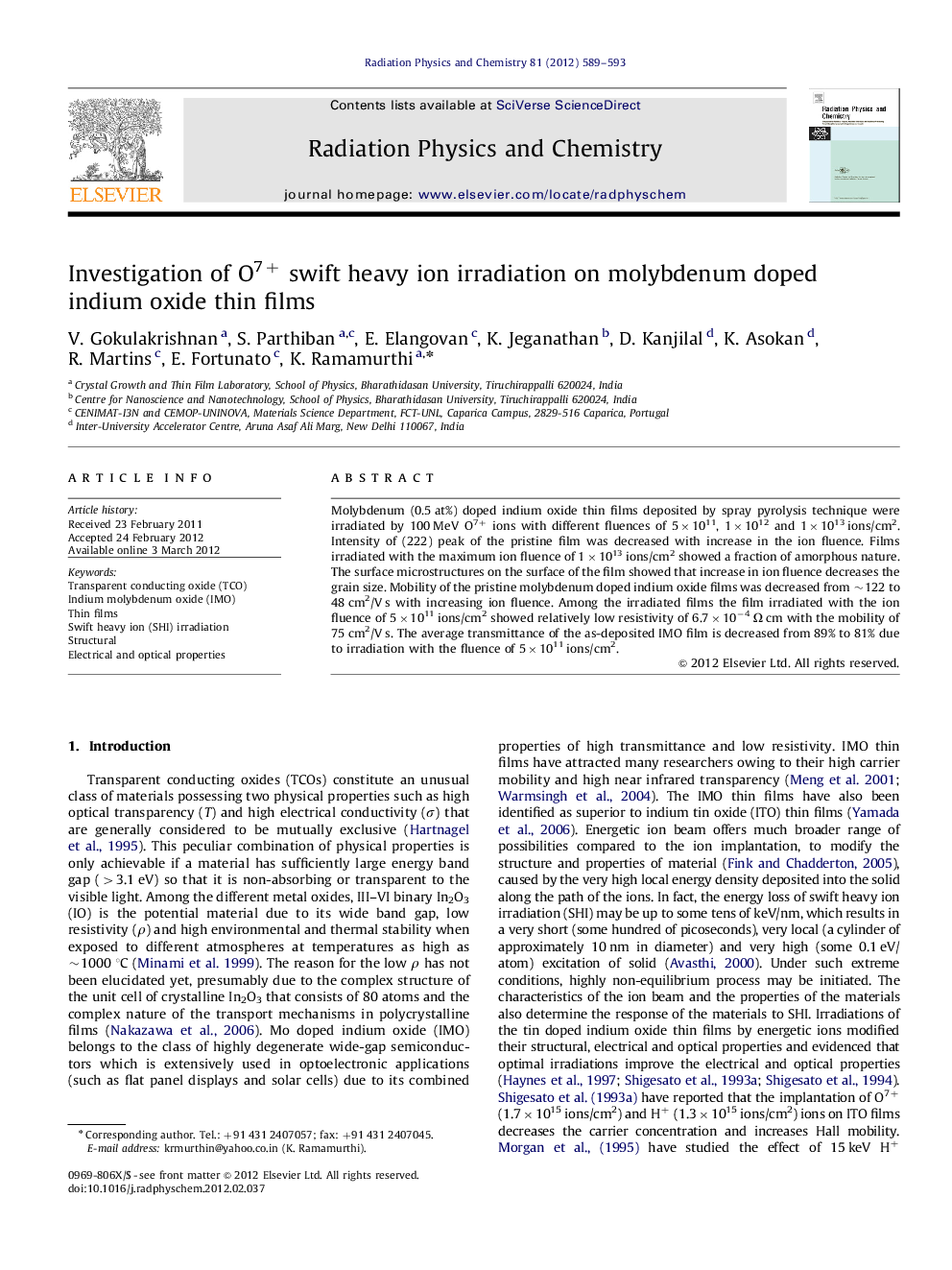| Article ID | Journal | Published Year | Pages | File Type |
|---|---|---|---|---|
| 1884133 | Radiation Physics and Chemistry | 2012 | 5 Pages |
Molybdenum (0.5 at%) doped indium oxide thin films deposited by spray pyrolysis technique were irradiated by 100 MeV O7+ ions with different fluences of 5×1011, 1×1012 and 1×1013 ions/cm2. Intensity of (222) peak of the pristine film was decreased with increase in the ion fluence. Films irradiated with the maximum ion fluence of 1×1013 ions/cm2 showed a fraction of amorphous nature. The surface microstructures on the surface of the film showed that increase in ion fluence decreases the grain size. Mobility of the pristine molybdenum doped indium oxide films was decreased from ∼122 to 48 cm2/V s with increasing ion fluence. Among the irradiated films the film irradiated with the ion fluence of 5×1011 ions/cm2 showed relatively low resistivity of 6.7×10−4 Ω cm with the mobility of 75 cm2/V s. The average transmittance of the as-deposited IMO film is decreased from 89% to 81% due to irradiation with the fluence of 5×1011 ions/cm2.
► The study reports the improved structural, morphology and electrical properties of molybdenum doped indium oxide (IMO) thin films. ► From the XRD, the ion irradiation has changed the preferred orientation from (222) to (400). ► From surface morphology analysis, the average grain size decreased to 48 nm and RMS roughness is significantly reduced to 11 nm for an ion fluency of 1×1013 ions/cm2. ► The mobility of ion irradiated films (1×1013 ions/cm2) is decreased from 122 to 48 cm2/V s. ► The average transmittance (400–800 nm) of the as-deposited IMO film is decreased from 89% to 66 % after SHI irradiation.
